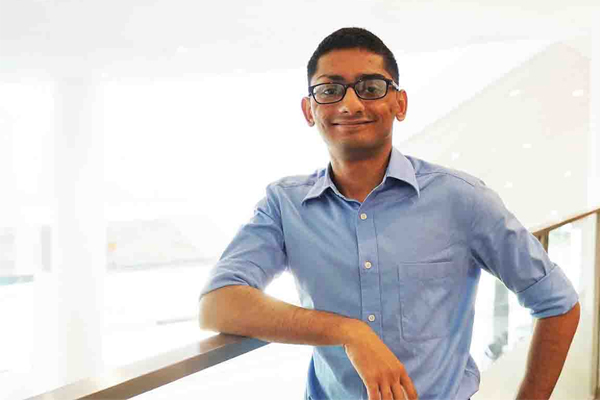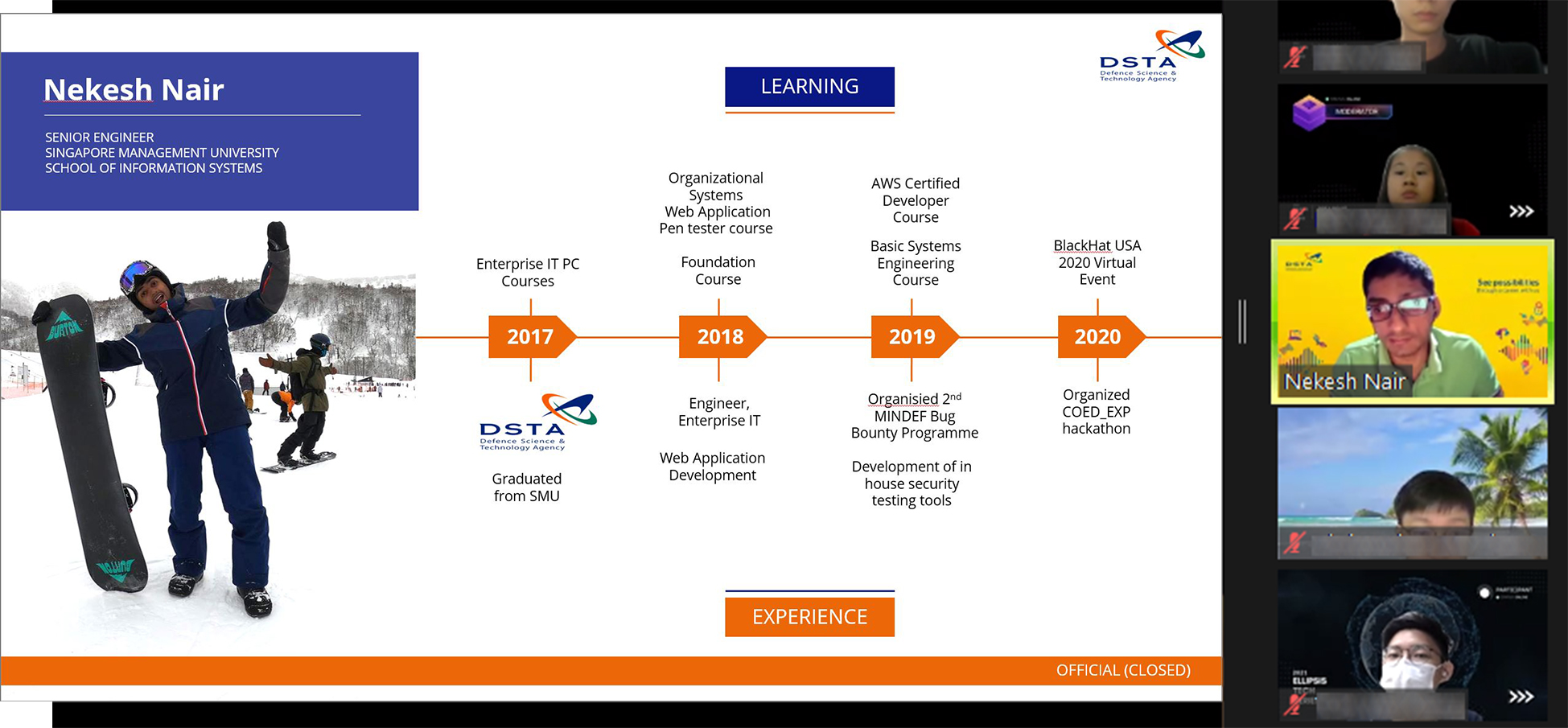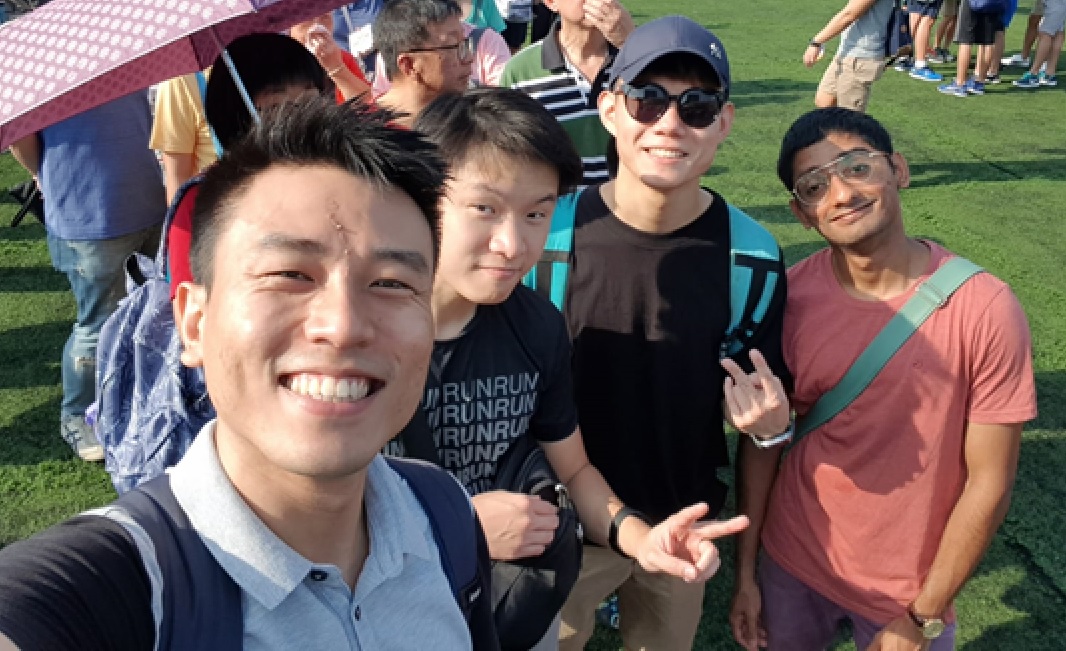20 Sep 2021
Being an engineer may be just a job to some, but for others like Senior Engineer (Enterprise IT) Nekesh Vijayan Nair, it can also be a calling. Speaking to students at the SMU Ellipsis Tech Series 2021, which invited industry professionals and experts to share about their work, the SMU alumni talked about what it means to be a defence engineer in DSTA.

How was your experience at the Tech Series?
It was great to be back at my alma mater and getting to talk with my juniors. I was able to share about the various technical projects and roles in DSTA, my career, and the opportunities available to aspiring students.
They asked many questions about what it’s like working in my field, what made me choose to build my career with DSTA, and the type of skillsets required for a technical job. I could feel their enthusiasm even through the video call!
Their questions were similar to what had gone through my mind before my graduation, so I hope I’ve managed to give them a better idea of how to prepare themselves for the working world, what we do at DSTA, and see that there are many different career paths to pursue in the defence sector.

What inspired you to join DSTA?
I’ve always wanted to find a job which is meaningful, where there are opportunities to contribute to society directly. During my NS days in the Air Force, sometimes we would have DSTA engineers coming in to work on new weapons systems for the aircraft. While I was not privy to their work at that time, I thought that being able to work on systems that would help strengthen Singapore’s defensive capabilities would be an interesting career. That left a lasting impression, which prompted me to learn more about DSTA.
By the time of my graduation, I knew for sure that I also wanted to work in a technical field, because I enjoy coding and learning how applications interact with one another. Furthermore, one of my majors was security-related, so I was very keen to delve deeper into this field.
DSTA became the obvious choice – not only did it check all the boxes, it also had a hands-on culture and many opportunities to explore a wide spectrum of engineering disciplines. It’s been four years since, and I’m still loving what I do. I know that what I do helps Singapore leverage cutting-edge technology for the defence and security of our nation.
How does a day in the life of your role look like?
As a software engineer working on cybersecurity issues, I look into the governance and policy management of projects, and perform vulnerability assessments and penetration testing for applications. What I do varies from day to day, and it can get quite hectic at times, especially when I’m juggling between a few projects at the same time. I could be brainstorming and sharing new technologies and ideas with my colleagues one day, and implementing solutions the next. It never gets stale!
Working in the defence sector comes with a set of unique challenges, but overcoming these challenges and getting to enhance Singapore’s digital defences is a part of my job that I truly appreciate.
What are you up to now?
My team and I are currently working on automating security testing for our cloud-based systems. The use of cloud technology has allowed us to further explore new technologies that can make the process more efficient. For example, we are able to leverage container technologies that allow developers to spin up the necessary testing tools they need, which will help streamline the process as they will not need to rely on limited physical resources.
What’s the best thing about working in DSTA?

Nekesh with his colleagues, in a photo taken before COVID-19.
The work culture! We also have a family-oriented culture – the people here are very friendly, always supportive of one another, and generous with their knowledge and experiences. There are also many interest and sports groups where we can make new friends, and that encourages us to hang out together even outside of work.
DSTA is also focused on nurturing staff, and we are exposed to a wide variety of projects in various domains to help us develop different skillsets and broaden our horizons. We are also given many opportunities to attend workshops and conferences, so that we can stay abreast with the latest tech developments.
If you could go back in time, what would you tell your younger self to better prepare for a career in defence technology?
Never take things as they are. As a developer, we shouldn’t just take requirements and create functions based on that – instead, we should evaluate the functions, assess their usefulness, and see how we can enhance the product. This way, we are able to add value to our work, and build something that is truly useful and meets the requirements.
Get more exposure to the industry. When I was still in school, I was worried that my lack of knowledge of the industry would be a big challenge, so I took up several internships to make sure I got some hands-on experience in application development. For those interested, DSTA has many internship opportunities!
Similarly, join more hackathons! I believe that hackathons give students a real taste of work, and the experience will be invaluable when they get to lead their own projects.
In your opinion, what are the three most important qualities a defence engineer must possess?
First, a passion for technology. Our work goes beyond just defence – there are occasions where we’d do proof-of-concepts and explore various new technologies to find potential defence applications.
Second, a strong desire to play a meaningful role in defending Singapore.
Third, a good breadth of knowledge and skills, and the desire to stay ahead of the tech curve. There is no running away from having a strong foundation and tech is constantly advancing, so we must also stay updated with the latest in the field.
Any words of advice for aspiring engineers?
Keep an open mind. As an engineer your job is to solve problems – the solutions may not always be simple, and may require flexible thinking.
